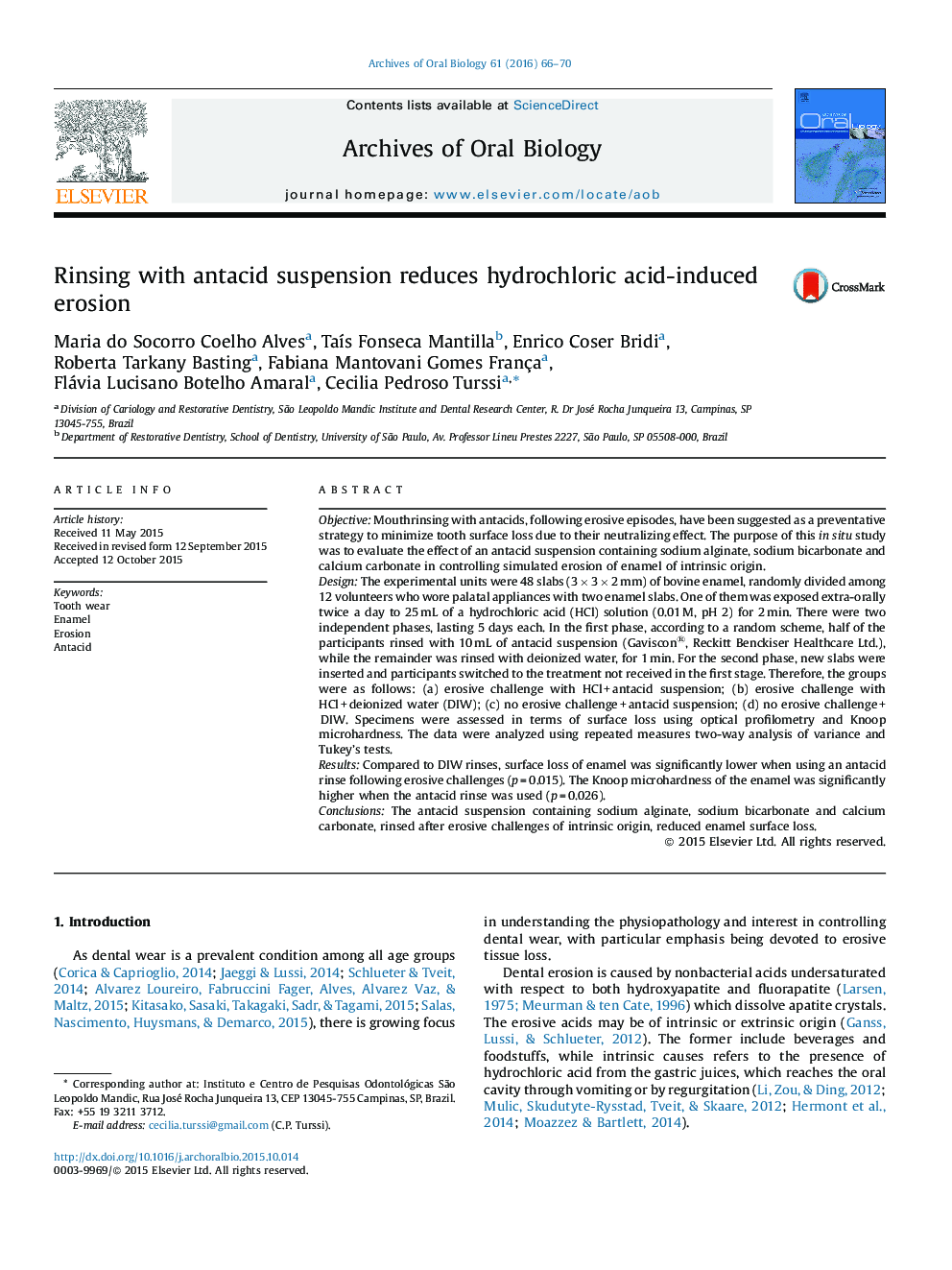| کد مقاله | کد نشریه | سال انتشار | مقاله انگلیسی | نسخه تمام متن |
|---|---|---|---|---|
| 3120727 | 1583292 | 2016 | 5 صفحه PDF | دانلود رایگان |
• Antacid suspensions decrease enamel loss in vitro.
• We examined whether the reduction in enamel loss by an antacid suspension would hold intraorally.
• Mouthrinsing with an antacid suspension after vomiting represent a promising strategy to counteract enamel loss.
ObjectiveMouthrinsing with antacids, following erosive episodes, have been suggested as a preventative strategy to minimize tooth surface loss due to their neutralizing effect. The purpose of this in situ study was to evaluate the effect of an antacid suspension containing sodium alginate, sodium bicarbonate and calcium carbonate in controlling simulated erosion of enamel of intrinsic origin.DesignThe experimental units were 48 slabs (3 × 3 × 2 mm) of bovine enamel, randomly divided among 12 volunteers who wore palatal appliances with two enamel slabs. One of them was exposed extra-orally twice a day to 25 mL of a hydrochloric acid (HCl) solution (0.01 M, pH 2) for 2 min. There were two independent phases, lasting 5 days each. In the first phase, according to a random scheme, half of the participants rinsed with 10 mL of antacid suspension (Gaviscon®, Reckitt Benckiser Healthcare Ltd.), while the remainder was rinsed with deionized water, for 1 min. For the second phase, new slabs were inserted and participants switched to the treatment not received in the first stage. Therefore, the groups were as follows: (a) erosive challenge with HCl + antacid suspension; (b) erosive challenge with HCl + deionized water (DIW); (c) no erosive challenge + antacid suspension; (d) no erosive challenge + DIW. Specimens were assessed in terms of surface loss using optical profilometry and Knoop microhardness. The data were analyzed using repeated measures two-way analysis of variance and Tukey’s tests.ResultsCompared to DIW rinses, surface loss of enamel was significantly lower when using an antacid rinse following erosive challenges (p = 0.015). The Knoop microhardness of the enamel was significantly higher when the antacid rinse was used (p = 0.026).ConclusionsThe antacid suspension containing sodium alginate, sodium bicarbonate and calcium carbonate, rinsed after erosive challenges of intrinsic origin, reduced enamel surface loss.
Journal: Archives of Oral Biology - Volume 61, January 2016, Pages 66–70
